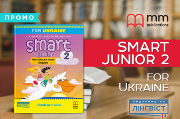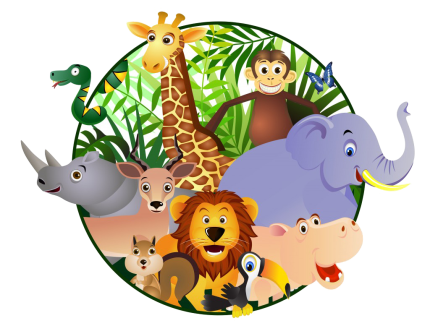Урок у 2 класі "Story time. Can lions run?"
 Lesson plan
Lesson plan
Grade: 2
Topic: Story time. Can lions run?
Aims:
- To develop listening and reading skills.
- To learn and identify animals (lion, zebra, giraffe).
- To revise story-related vocabulary.
- To describe an animal and to talk about what an animal can do.
- To reinforce the use of the verb “can”.
- To give learners the opportunity to participate in the storytelling process.
- To improve speaking skills.
Learning outcomes:
by the end of the lesson students will be able to listen and read about animals (lion, zebra, giraffe); to use story-related vocabulary and the verb “can”; to discuss and act out the story.
Vocabulary: leg, tail, tree, giraffe, climb, lion, zebra.
Materials: flashcards for “leg, tail, tree, giraffe, climb, lion, zebra”;masks of animals; a car cut out of carton; Student’s book (or story text, one per pair of learners), Student’s CD and sounds of animals; posters of trees to decorate the classroom for acting out the story; toy animals; “magic” bag, alphabet cards, a set of animals for each child and worksheets ‘Look and spell’; envelopes with the sentences and pictures of the story; white pieces of paper.
Age: primary (7-8)
Time: 40-45 minutes.
Introduction
Story is a highly adaptable teaching tool and can be used in a variety of ways to teach a range of skills. This lesson focuses on extended listening, reading skills and getting learners to actively participate in the storytelling process, allowing them to use their prediction skills in a creative and fun way. There are also some follow-up activities that develop speaking skills and different areas of language in the story.
Procedure
1. Warm up.
- Write or print the title of the story “Can lions run?”, hang it and animals pictures on the board. Then say the learners that you are going to tell them a story with this title.
- Ask students to look at the pictures on the board and guess what the story and the lesson is about. ( Students look at the pictures and say that we are going to talk about animals at this lesson.)
- Before introducing a new vocabulary and listening “Can lions run?” you could brainstorm the topic of wild animals learnt in previous lessons.
- What wild animals do you know?(Elephant, penguin, crocodile, parrot)
- Can you think of one animal for a letter of the alphabet? (Teacher demonstrates an alphabet card and students name the animal “Mm-monkey, Bb-bear…”
2. Vocabulary.
- To generate interest, put a few plastic or soft toy wild animals in a magic bag and slowly take them out, one by one, only revealing a small part of the animal at a time. Elicit guesses about the contents of your magic bag. Before preparing this activity put new toy animals which you are going to learn at the lesson in the bottom of the bag and ask students to take out them one by one. Say the name of these animals and ask students to repeat.
- Stick the flashcards of the animals and other new words (climb, leg, lion, zebra, tail, tree, giraffe) on the board, point to each one and encourage students to say the word depicted on them and mime it at the same time.
- Have students open their books to pages 58-59. Play the CD and have students listen and point to the pictures and repeat.
- Play the game “Touch it”.
Divide students into two groups and say the learnt word. Learners have to come one by one to the board and touch the corresponding flashcard. Teacher monitors from which group the student touches the flashcard correctly and first. Repeat the procedure until all students have had a turn.
3. Pre-reading/speaking activities.
- Have your children seen any films, cartoons or TV programmes starring wild animals (e.g. the Jungle Book, Madagascar, The Lion King, wildlife documentaries? Ask students (in L1) to tell about it.
- Tell students they will listen to and read a story about animals as they guessed at the beginning of the lesson. Ask them to read the title “Can lions run?”, to look at the pictures and answer the questions.
-What are the main characters of the story? How do you think?
-Name the animals at the pictures of the story (a giraffe, a hippo, two lions, a zebra).
-How many people can you see in the car? (4)
-What colour is the car? (Red)
-How many (pictures) parts of the story can you see? (4)
4. While-reading/listening activities.
- Play the CD and ask students to point to each speech bubble as they follow along.
- Play the CD again and invite students to shadow read (read along with the CD). Then play it again, pausing after each line. Have students repeat (chorally-in groups-individually).
- Elicit guesses about the animals in each frame. What do they think the boy see?
Frame 1. I think it’s a giraffe. It’s a hippo.
Fr.2. It’s a zebra.
Fr.3,4. Two lions.
- Next, encourage your children to join in with the words (in military drill style), repeating each sentence as you go along. You may like to divide up the class into 4 groups, each group taking a different part, e.g.
Group A read the sentences from frame 1.
Group B read the sentences from frame 2.
Group C read the sentences from frame 3.
Group D read the sentences from frame 4.
5. After reading activities.
- Talk about what happens in each frame in details.
Frame 1. Can you say who are sitting in the car? (Father, son, daughter and a driver). Say students that four people are on a safari. Explain the difference between the words “zoo” and “safari”.
-What cannot giraffes do? Find in the text. (They can’t swim).
- Who explained it to the boy? (Dad)
-Has the hippo got a big or a small mouth? (A big mouth)
Frame 2.
-What animal is on the second picture? (It’s a zebra)
-What colour is it? (It’s white and black)
-Can zebra climb? (No, it can’t)
-Where is it? (It’s under the tree)
-What colour is the tree? (It’s green and brown)
Frame 3.
-What animals can the boy see here? Lions.
-How many lions are there? Two.
Frame 4.
-Can the lions run? (Yes, they can)
-Is the boy happy or scared? (He’s scared)
-Have the lions big mouths? (Yes, they have)
- Play “I spy” with the different parts of the story. For example, “I spy with my little eye, something beginning with “L” (e.g. long, legs, lions)!
- Which animal did the boy see first? Give your children a set of animals and ask them to put in the correct order.
1. A giraffe. 2. A hippo. 3. A zebra. 4. Two lions.
- Look and spell the story words.
 Give your students the worksheet “Look and spell”
Give your students the worksheet “Look and spell”
Can you spell the names of the words? Look at the example and write.

o n l i o n
l i

t
e e
r
- - - -
 g
g
i r
a f _ _ _ _ _ _ _
f e

 _ _ _ _ _
_ _ _ _ _
c
i l
m b
 z
z
e r _ _ _ _ _
b a
 t
t
_ _ _ _ i a
l
- Revise what happened in the story by giving each pair of students an envelope with the sentences of the story cut into pieces and pictures. Students have to read the parts of sentences and put them together and then put to the pictures according to the scenes of the story.
- Ask students to act out the story in their groups. Have some groups of students perform for the whole class. (Bring masks of animals for them before).
6. Post-story activity.
- Draw student’s attention to the value and read it aloud. Discuss it with students using L1.
- Ask students “What is your favourite wild animal? What can it do?” Give a white piece of paper for each student and ask them to draw their favourite animals from the story and write the value “Respect animals” on their posters. Hang them on the board and read the value chorally with your students.
Конспект уроку у 2 класі
на тему:
«Story time. Can lions run?»



про публікацію авторської розробки
Додати розробку
